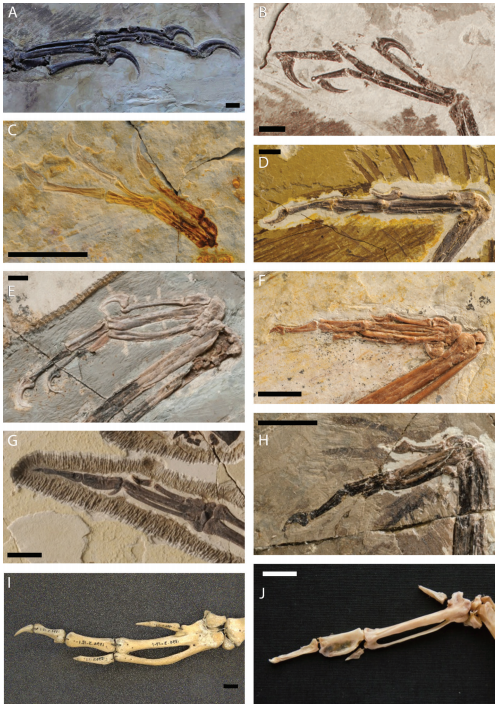Investigation
Disparity and Macroevolutionary Transformationof the Maniraptoran Manus
Sergio M. Nebreda, Guillermo Navalón, Iris Menéndez, Trond Sigurdsen, Luis M. Chiappe and Jesús Marugán Lobón
Multiple factors involved in the evolutionary transformation of the manus across the maniraptoran radiation, including its current morphology in modern birds, remain unexplored. Specifically, the morphological disparity of the manus has never been studied quantitatively, and there are no hypotheses about the possible mechanisms and constraints underlying its evolution. Morphological disparity is best studied with shape-analysis tools based on Procrustes methods, because they guarantee the independence of shape from size while depicting the results in expressive graphics. However, this methodology compares fixed configurations of coordinates, preventing their use in highly articulated and movable structures such as the maniraptoran manus. Here, we propose a new protocol, the one-dimensional Procrustes analysis (OPA), for transforming the chord lengths of these bones into unidimensional Cartesian coordinates, enabling treatment of the data under the operational advantages of the Procrustes methods. Our results applying this new method on a sample encompassing 174 maniraptoran dinosaurs manus, including 79 fossils (both avialan and nonavialan taxa) and 95 extant paleognathans and neognathans, document the morphological transition between early-diverging maniraptorans, nonavialan paravians, and birds over morphospace, highlighting an unexpectedly low disparity in the crown group when compared to early-diverging taxa. Within this transition, we show a common trend of proportional reduction and loss of distal elements, mostly in the minor and alular digits. Furthermore, our study reveals an allometric pattern characterizing manus morphological variation between early-diverging maniraptorans and enantiornithine avialans that disappears in crown birds and their closest early-diverging counterparts. This previously unnoticed allometric trend suggests a complex interplay of developmental, functional, and historical constraints in the evolution of the maniraptoran manus.
Disparity and Macroevolutionary Transformation of the Maniraptoran Manus
